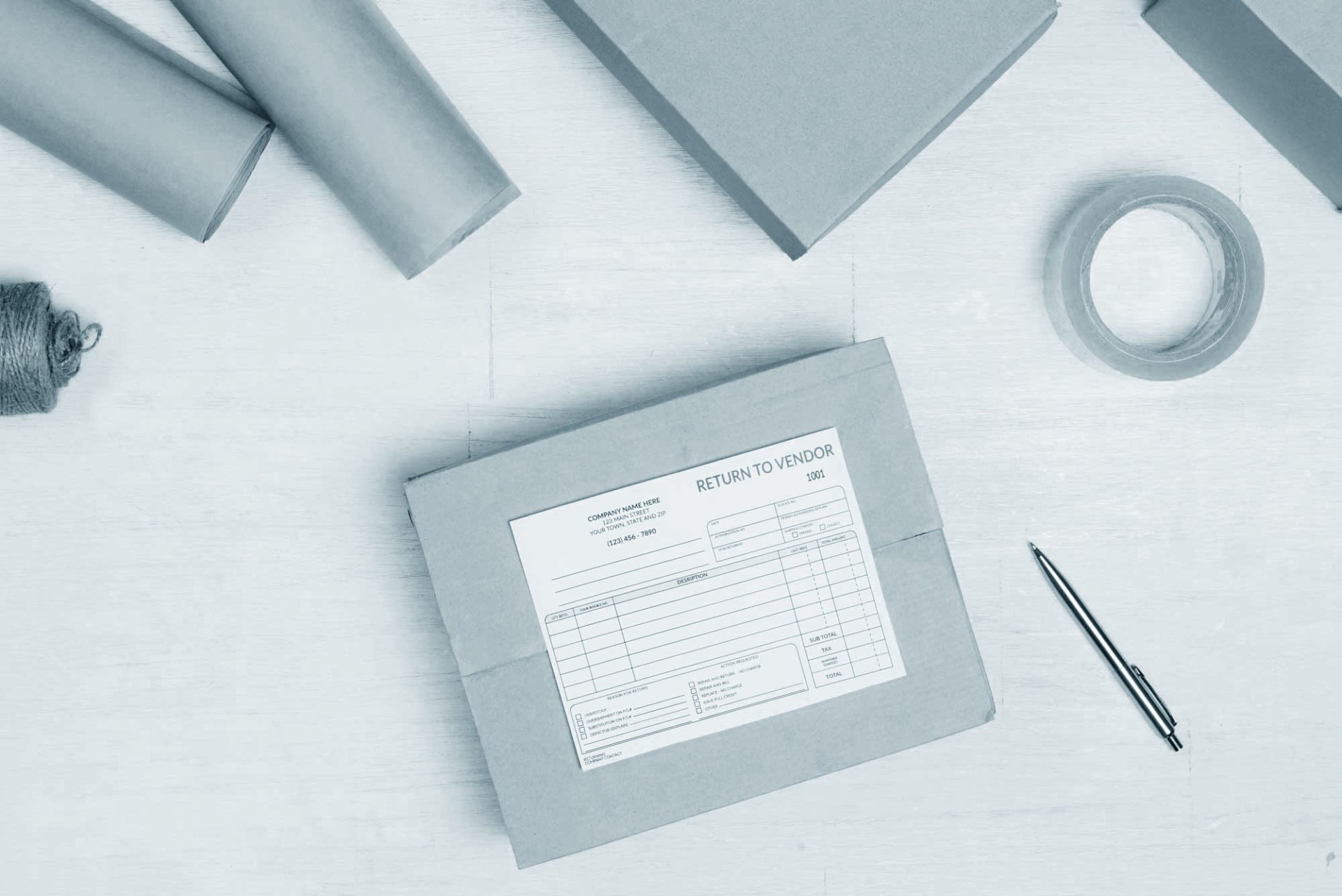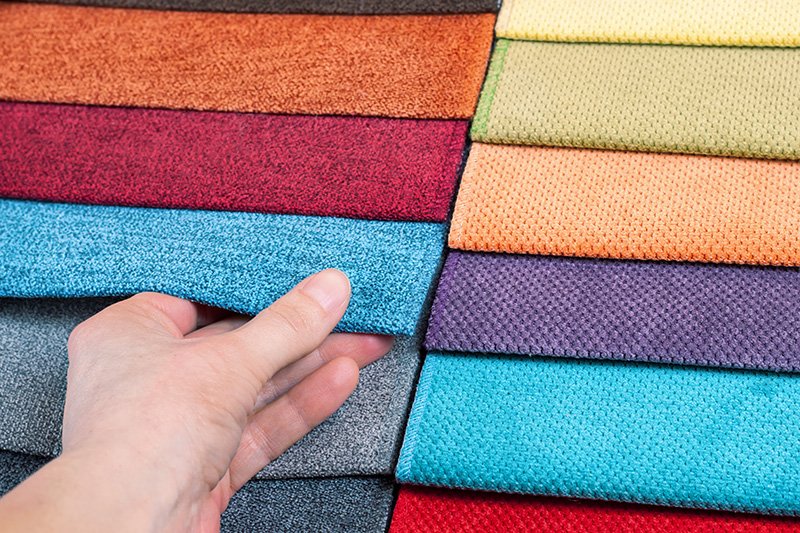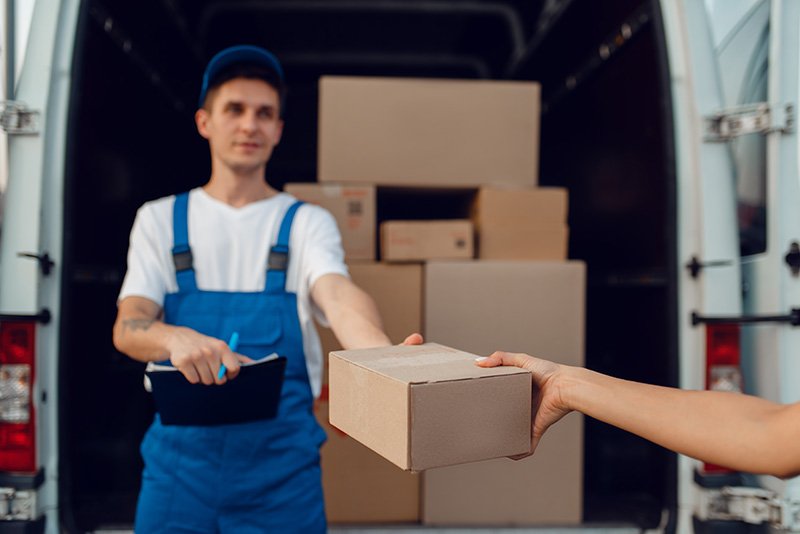Request a free offer
We look forward to learning more about you and your project.

It's one of those things with the returns. Online customers don't want to do without it, because it gives them more security when shopping online. Quite practical when you don't have to commit: Too big? Too small? Don't like color? Just take a look? Just send it back, no problem. At least not for the buyer. Because even if returns are usually already taken into account: The dealers often have a lot of headaches with their own customer service - and a lot of effort, because the whole sales process runs exactly the other way round. In this article we explain how you as a shop operator can minimise your expenses for returns management and how you can also reduce the returns rate.
Today you don't want to miss it anymore and already at the time of the first mail order catalogues it was like this: The customer orders, the dealer delivers the goods to his home. Anything that doesn't fit or please is put back in the carton and returned to the retailer. If you pay, in the end you only get what you really want to keep. The customer has learned that in the meantime. Free returns, just like buying on account, have long been part of a convenient shopping experience.
And even if you as a retailer don't like to deal with this annoying topic, returns and returns management are part of the online business model. The vast majority of online shoppers would simply shop elsewhere if they did not have the returns service they are used to. For the shop operator, the reasons for returns are primarily of interest and, of course, how high the quota is. For the e-commerce sector, there is generally talk of a return rate of around 15 percent. However, this varies from sector to sector and can deviate significantly from the average value.
Let's not kid ourselves: At three percent, the average conversion rates in e-commerce are not exorbitantly high. If too many returns come into play, even less of the cake remains. Returns cost time and money. Acceptance of goods, cleaning, reprocessing, repair, new and repackaging, re-storage ... According to the EHI Retail Institute, the average cost per return to the retailer in figures is 10 euros. It is also possible that the returned goods can no longer be sold at all, or if they are, then only as B goods.
There are many ways to reduce your returns rate, but one thing you can never change: The black sheep in online shopping. There will always be someone who lets you send things home, looks at them, uses them and then simply sends them back. Fortunately, the type of customer who abuses the free return option is rare. When optimizing returns and managing returns, focus entirely on your favorite customers and avoid rigorous measures such as Amazon and other large shops: These blocked the accounts of those customers who attracted attention due to above-average return rates. The feedback was correspondingly negative.
How can the return rate be reduced? Our tips
Satisfied customers do not return - at least less than dissatisfied customers. And perhaps returns are also an indication that something is wrong with the online shop. Of course, mistakes and misunderstandings can always occur, but avoid those that frustrate the customer. Otherwise it will be the last return at some point and the customer will shop elsewhere in the future. The following tips should help you to eliminate the reasons for returns as far as possible.
Only "look" but no "feel" - clear and unambiguous product details
"I imagined it to be completely different" or "On the website the fabric looked somehow more finely woven" - have you ever said such a similar sentence yourself as a customer? Then the online retailer you bought from definitely did something wrong. Because even if the product pictures and videos show the product as such, online shopping simply lacks the simultaneous look and feel that one has when shopping in the stationary trade. And because you can't touch the articles in your web shop, the only thing you can do is to stimulate the imagination of your customers so much that they can think of the feeling.
Therefore, please pay attention to the following basics:

The more detailed the better. Ideally zoomable photos that show the article in high resolution from all angles. The customer gets a precise view of the texture and structure of the material surface, but also in terms of the size and dimensions of a product, they eliminate any misunderstanding. Whether, for example, a piece of furniture looks right in a room becomes clear much faster and more precisely on the basis of pictures than dimensional data such as "66 x 120 x 10 cm", under which many people cannot imagine much. Particularly with smaller items, it makes sense to photograph them in their environment of use so that their actual size can be better estimated.


How does the garden tool behave in use? How does the fabric fall? Is the function uncomplicated? Moving images convey even more impressions about quality and usefulness than photos alone could ever convey. Positive side effect: They appeal to the customer emotionally and increase the time spent on the online shop, which in turn is positive for the evaluation in search engines.


Even the best photo and the best monitor won't help: Some things you just have to see live and hold in your hand to get a real picture. Whether with colours, wallpapers, fabrics or other sample sizes - in many cases it can make sense to offer the customer a feel for the look without immediately delivering the complete article and thus risking avoidable returns. Those who "just want to take a look" are still satisfied.


An optimal article description underlines what has been seen before and makes the product appealing to the customer without forgetting the essential details. It is both able to sell as well as to get the most important information about the article to the point.
Especially in the fashion sector, a good interplay of visual impressions and the right text information is a minimizer of returns when it comes to fit and size. Under a statement like: "The model is 1.80 m tall and carries size M" the customer can imagine something concrete. Last but not least, a good, unique, self-written article description stands out from the thousands of sample descriptions of the manufacturers available in the online shops. And that is from view of the search machine optimization for your Onlineshop likewise an advantage.


Online shopping is often impulse-driven and many buy things even though they had no intention of doing so. The longer you wait for your order after such an impulse purchase, the more likely you are to reconsider your purchase and ask yourself, "Do I really need this?
Improve the delivery times of your shop and make sure that the customer has his item in his hands as soon as possible. The only important thing is that availability and delivery information in your shop, for example. The "Immediately ready for dispatch - delivery time: 1-3 working days" can actually be adhered to.


Customers with low return rates are always welcome customers. There are even buyers who feel bad about returning an order despite a justifiable reason for returning it.
It is precisely these customers who can reward them and motivate others to hold back with returns. For example, offer reduced or free shipping costs, or even discount vouchers if your return rate remains at a low level. This makes both you and your customers happy.


Anyone who is interested in a product would like to know more about it. And this should be done quickly and best of all by people who own the product themselves. Positive product evaluations do not only provide more confidence on the buyer's side, they also motivate to buy. Therefore you should not do without this instrument.
Of course, unjustified valuations cannot be excluded 100 percent. If, however, several buyers of a product express themselves with hints such as: "The construction is only possible with skilled craftsmen", you will avoid a customer with no motor skills first daring to approach the product and then sending it back to you in frustration.


Mistakes can always happen, but the really avoidable ones are sometimes the most annoying: Is there exactly what the customer ordered in the package? Is the product intact? If not, the order will certainly be returned. So take a close look at the order picking process. But it's not just wrong deliveries that cause returns; damaged items also do. Ensure a high level of control and quality assurance. Make sure that the item is undamaged and free of defects before shipping.


Even if you sell the best product in the world and place the most beautiful pictures, videos and article descriptions in your online shop, you will still always return goods if the packaging is useless and the article is damaged on its way to the customer. Some shipping companies don't exactly handle the parcels they deliver with care - and you should take this into account when shipping and handling the shipment.
Can your cartons withstand the stresses and strains? Is the inside of the goods well protected against shocks? Nothing is more frustrating when shopping than finding out while unpacking that the plasma TV has suffered display damage or that a crack has got into the display case door. Although transport damage cannot be 100% ruled out, if the packaging is so obviously unsuitable for transport that the customer notices it, this is not only harmful to your goods, but also to your image.


Returns are not always the last resort if there is a reason for complaint on the part of the customer. Is a defect reasonable under certain circumstances? Then talk to your customer about a price reduction, a credit note or another suitable solution. This can be cheaper for you than processing a return. And priceless: It strengthens customer loyalty if the customer realises that you have taken the trouble to respond to him individually and offer him a compromise - an alternative to a return. Signal and communicate to your customers that you are always available in case of problems and take the time to take care of them personally.


What is the reason why a customer returns his goods? Are there misunderstandings? Are they manual mistakes? Whatever it is, find out. For example, by setting up a field on the return slip in which the reason for the return can be noted. If you notice a certain reason more often, you know exactly where to start. Take the clues from e-mails seriously and check whether the complaints are true. However, nothing replaces the direct line: get in touch personally and talk to your customers about things you can do better.

Returns are part of the business, but it's the frequency that counts in the end. And when it comes to successfully reducing the rate of returns, don't be bogged down in the symptoms, get to the bottom of the causes. Many of these things you can improve or have improved by yourself: create fancy product photos and videos, write individual article descriptions, speed up shipping, provide better packaging, and much more. You should also take a close look at internal processes, from order acceptance and picking to logistics and shipping.
Of course, you can be completely relieved and outsource all tasks, from order and shipping processing to returns management, to one fulfillment service provider. Because not only a normal order but above all the reversal of a purchase process costs you valuable time, which you can use more effectively. For example, for your personal line to your customers, which nobody can relieve you of. Because despite all online shopping, every buyer loves the attitude of an honest businessman who takes care of himself. Nothing and nobody can take away the view and the feeling for the desires of your customers.
To offer a real, really personal service, which deserves its name, is reserved for you. And that is a good thing. If you outsource the right tasks and take the essential things into your own hands, you will reduce the return rates to a minimum and as a dealer you will be able to draw on the full potential.
Do you need support with returns management? If you have any questions or are looking for a service provider to take care of your returns, let us talk to each other!

We look forward to learning more about you and your project.